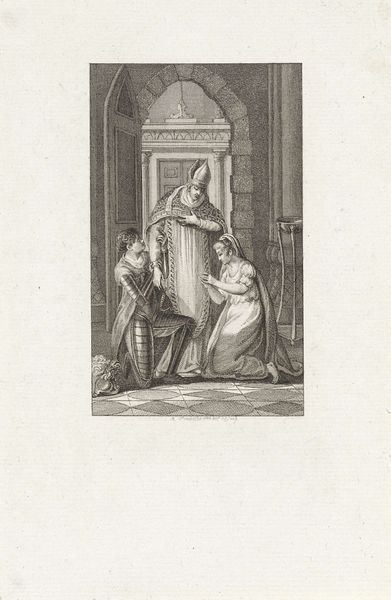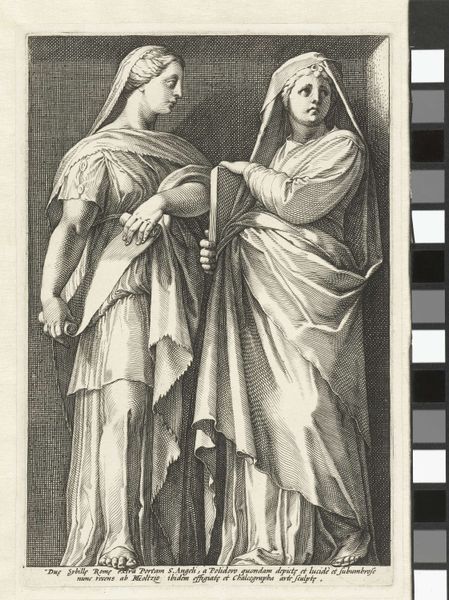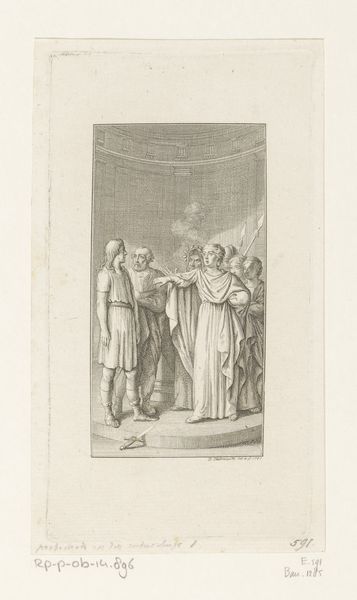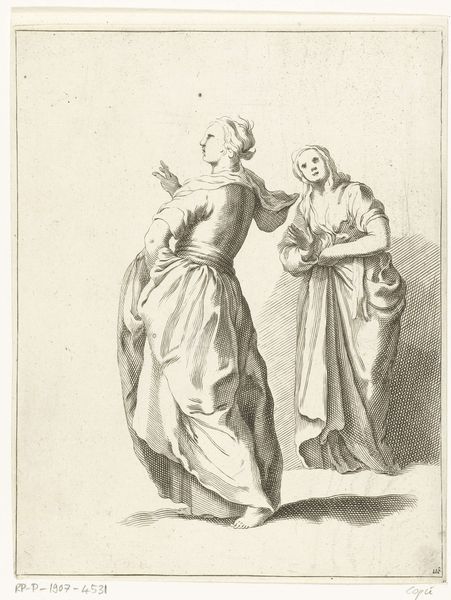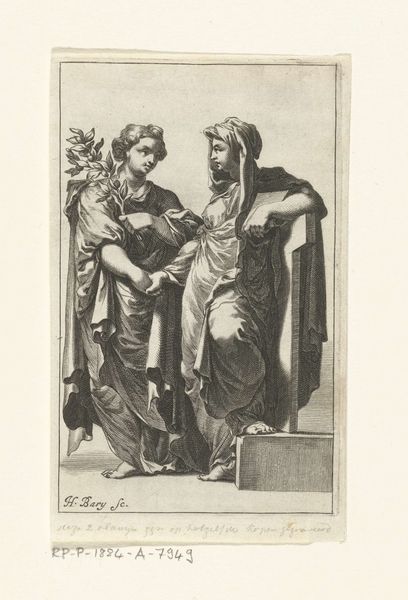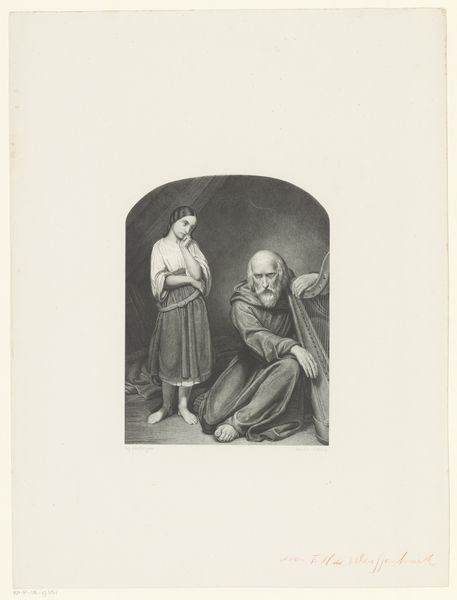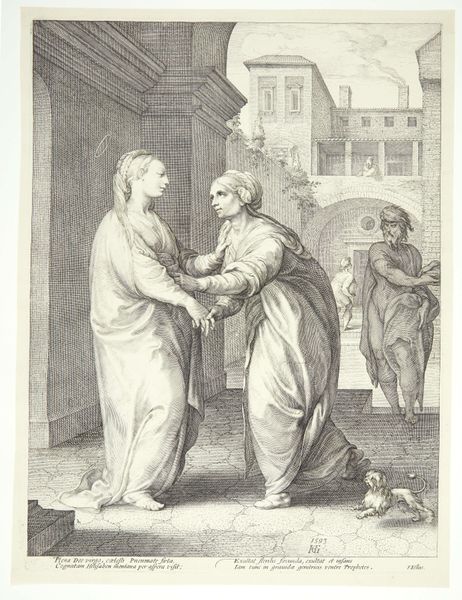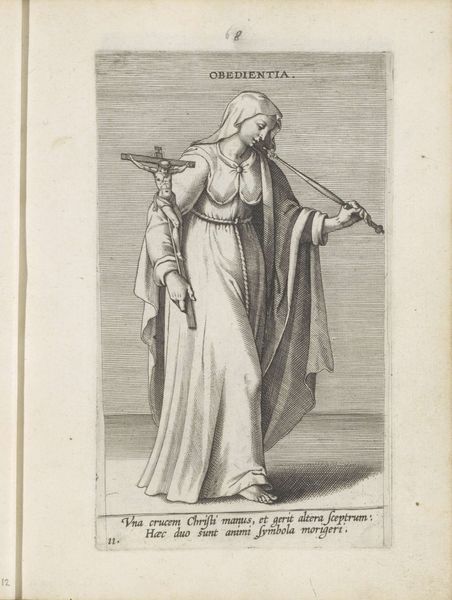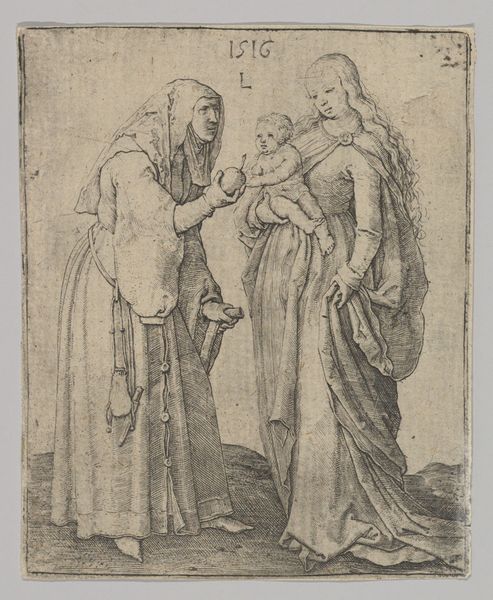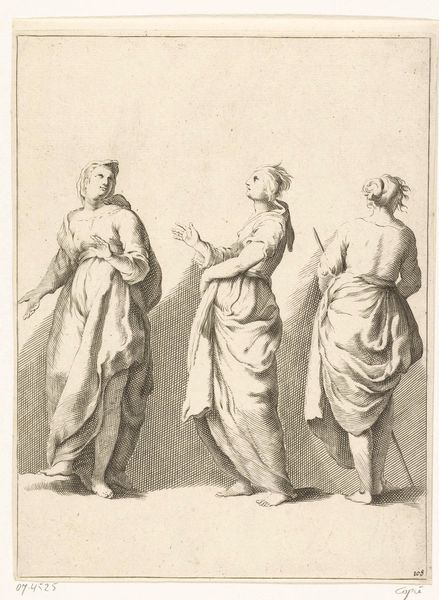
drawing, print, engraving
#
drawing
#
aged paper
#
toned paper
#
light pencil work
# print
#
classical-realism
#
figuration
#
form
#
line
#
history-painting
#
engraving
Dimensions: height 253 mm, width 223 mm
Copyright: Rijks Museum: Open Domain
Editor: Here we have "Twee Muzen", possibly from 1869, by Leo Paulus Johannes Stracké. It's an engraving on what looks like toned paper. It's interesting how the artist used very light pencil work to capture the drapery of the figures, giving it almost a sculptural quality. What do you make of this piece? Curator: Well, immediately, the visual rhetoric positions the viewer in dialogue with historical and academic art traditions. The muses, these allegorical figures, aren't just decorative; they're a direct link back to classical ideals, particularly in art academies of the 19th century. What sort of social role do you think such imagery played? Editor: It seems to elevate the status of art, almost like aligning contemporary artistic practice with the grandeur of the past. It makes me wonder, who exactly was the intended audience for this piece? Curator: Precisely! This wasn’t aimed at the masses, but more likely circulated among an educated elite, perhaps students or patrons involved in the art world. Engravings like this were often used to disseminate approved, classical styles. What does it say, though, that this classical scene is on what looks like aged paper? Editor: I suppose the aged paper emphasizes the age of the ideas and forms they are looking towards. Looking closely, I also noticed that this print is rather small, meaning it may have functioned in an intimate domestic setting rather than the museum! Curator: Exactly. Mass dissemination on an intimate scale, aimed at upholding a specific artistic and social hierarchy. So much context revealed through such understated imagery. Editor: This really brings a new understanding of how historical context shapes not only the creation but also the reception and function of an artwork! Curator: Indeed. Thinking about its place in its time illuminates its intended role in reinforcing social and artistic structures.
Comments
No comments
Be the first to comment and join the conversation on the ultimate creative platform.

